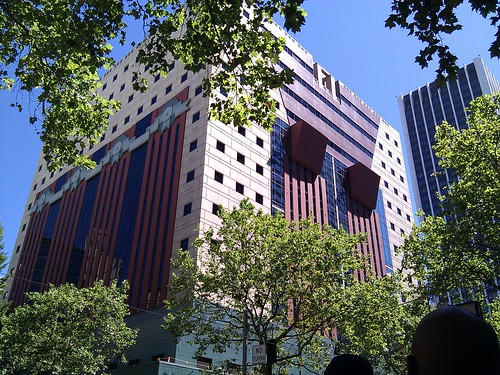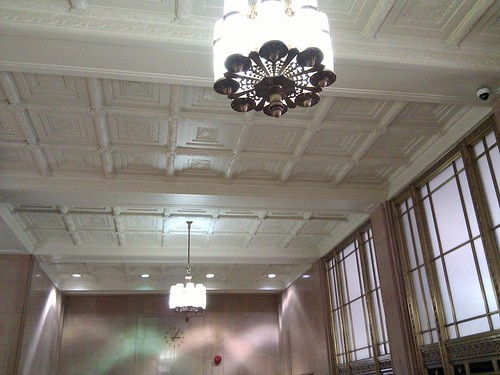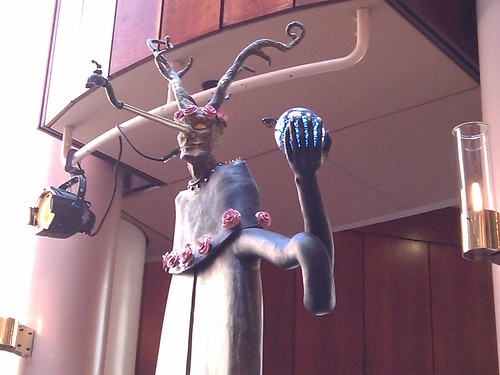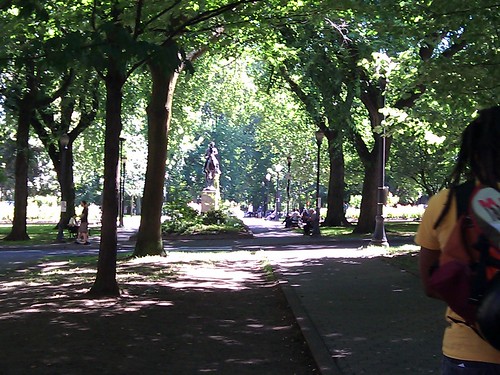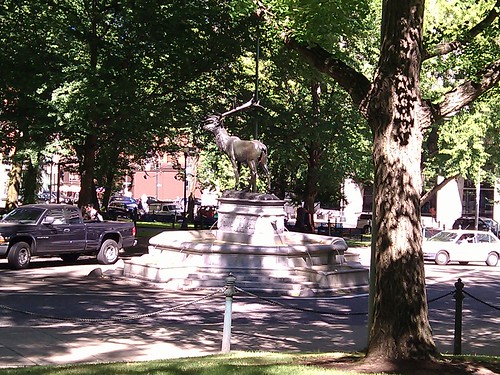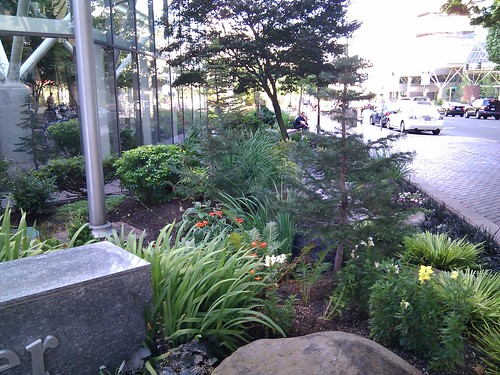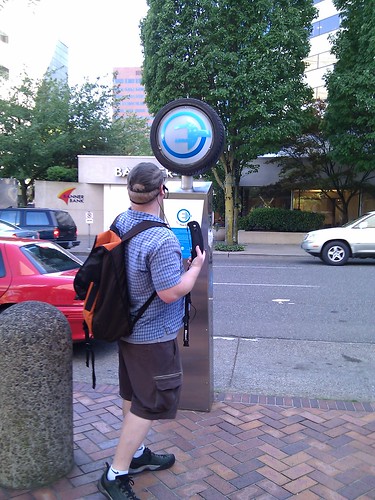This one was actually not from the tour, but was the view from the Oregon Convention Center.

And this is the convention center from my hotel room window.

Here is the view from the Metro as we go over the Willamette river. You can just see Mt. Hood peaking over that hill in the background.

This is the federal courthouse in Pioneer Square.
More views from Pioneer Square

and some more...

This milepost sign on the east side of the square gives the distance to local attractions and other locations around the world. Note that it is "a long way to Tipperary". :)
"Animals in Pools" by Georgia Gerber



"Quest"by Count Alexander von Svoboda, 1970
The Portland Building - Designed by Michael Graves - First major public building of the postmodern movement.
Portlandia - the second-largest hammered copper statue in the United States, after the Statue of Liberty.
An attractive downtown garden
Inside the Gus J Solomon courthouse
The atrium of the hall was designed to look like a theatre.
Very cool skylight.
Bizarro sculpture on which visitors are encouraged to sit. Reminds me somehow of The Silver Chair in the Chronicles of Narnia.
"Wise Fools" outside the hall.
The park blocks
Very cool perspective mural. The only real windows are in the center.
Benson Bubblers - to keep the lumberjacks from getting drunk during lunch
The Portland City Hall building
The Thompson Elk Statue in Chapman park
Solar powered self compacting trash can. Reduces the frequency of trash pickups
Outside the World Trade Center
Electric car charging station
Mill Ends Park - World's smallest public park
Willamette River with Mt. Hood in the background



